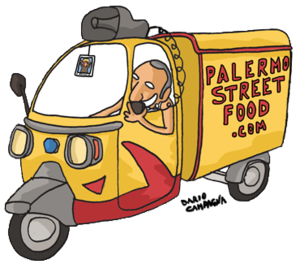The "day of the dead" or, in Sicilian, "U juornu rii muorti" is celebrated on the 2nd of November. This is the day when the church remembers, with special celebrations, those who are no longer alive,. People visit the cemetery, taking flowers and candles to the graves of dead relatives and friends; and children find presents `brought' to them by the "muorti," their dead relatives send them presents. As in other parts of the world, for example Mexico for "El dia de los muertos" or Japan for "Obon festival", it is a day dedicated to life and the family. The various traditions of the "iuornu re muorti" express the Sicilians' strong attachment to life and to their families, both those who are alive and those who are no longer with them. This is especially visible in the traditions that involve children since they create and reinforce links between them and those members of the family that are not alive anymore.
Even nowadays, in the days leading up to November 2nd, hundreds of little Fiere dei Morti – Fairs of the Dead decorate the streets of every Sicilian town and village: a tradition particularly evident in Palermo. Stalls sell typical sweetmeats, such as the queen of them all, the Frutta di Martorana (fruit made from almond paste), the crozzi ‘i mottu (bones of the dead), the pupatelli biscuits full of toasted almonds, the taralli ring cakes covered in icing sugar, the S-shaped nucatoli biscuits, and the white and brown Tetù.
There are also toys of every description which parents can buy to put in the Cannistru: a basket full of gifts, dries fruits and local delicacies which they prepare during the night to surprise their children in the morning. In some areas, children also hide away any graters there are in the house, because the dead have the habit of grating the feet of naughty youngsters while they are asleep!
Pupi ri zuccaru in the shape of Sicilian puppets knights This feeling of physical closeness to the dead is clearly demonstrated in the symbolism of the leading players in this festival: the Pupi ri zuccaru or sugar puppets: anthropomorphic figures made from solid sugar and sugar strands which are used to decorate the Cannistru. Traditionally, these so-called Sicilian puppets represented knights and paladins on horseback. Nowadays, however, they may depict dancers, little “dames”, footballers, or the children’s favourite personalities. It is said that this tradition goes back to a dinner given by an Arab nobleman, who, fallen on hard times, served up these little figures at table. This story gives us their name in the Palermo dialect: Puppaccena.



